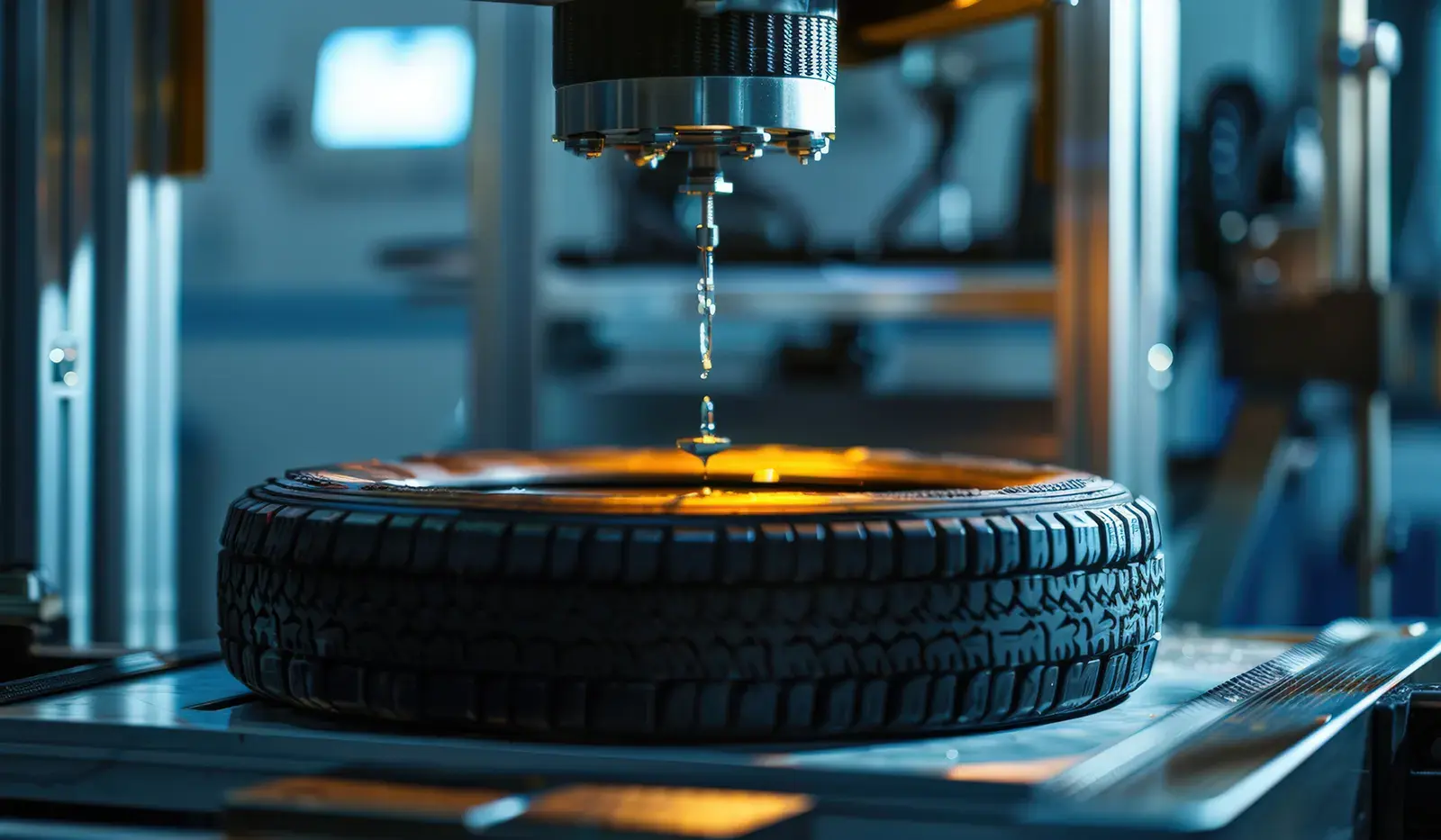4 min read
Challenges and solutions for automation in the metalworking automotive supply industry
 Benjamin Brumm
:
May 26, 2025 9:58:59 AM
Benjamin Brumm
:
May 26, 2025 9:58:59 AM

The automotive supply industry is undergoing enormous change, driven primarily by the technological shift towards e-mobility. Quality requirements and global competition are already enormous. Because far fewer parts are needed for e-cars compared to combustion engines - and suppliers can therefore sell fewer components - the pressure will continue to increase.
In this article, we describe solutions to the most important challenges of integrating robots into existing production processes. It shows how medium-sized automotive suppliers can remain competitive in the long term through clever planning, flexible systems and well-trained employees.
Modern automation solutions in conjunction with industrial robots and the current possibilities of artificial intelligence offer enormous potential, especially for metalworking companies that manufacture delicate components for the automotive industry.
However, anyone moving towards fully automated processes faces a variety of challenges: technical integration, costs, staff training and ensuring high quality standards.
1. Technical challenges: Integration into existing production systems
CNC machines, presses or laser cutting systems form the basis of many metalworking companies, some of which are also integrated into complex production lines. A new automation solution - such as an industrial robot plus all the necessary components for loading machines - must communicate seamlessly and reliably with these machines. Flexibility is also crucial, as the components can change frequently depending on the customer order.
Industry 4.0 approaches
Industrial robots and the connected peripherals should be integrated into the existing systems so that data such as processing parameters or key production figures can be automatically recorded and evaluated. Standardized interfaces, such as OPC UA , allow machine and process data to be exchanged in real time to ensure seamless processes.
Step-by-step integration
For medium-sized companies in particular, it is advisable to implement automation step by step rather than in a single large project. By automating machine loading first and gaining experience in the process, you can minimize the intervention in ongoing processes. In this way , production remains stable while the benefits of new technologies are tested.
2. Qualified workforce: Train staff for automation
In any automation solution, humans remain in a central role. The integration and use of industrial robots in the metalworking automotive supply industry requires employees who are trained in the use of robotics. This qualification can be a hurdle, especially if there is already a shortage of skilled workers.
Training and further education
Modern software for robots often has user-friendly programming interfaces and AI-supported assistance functions that make it easier to get started. Programming applications in particular is becoming increasingly simple. Nevertheless, it is important to involve the workforce in the project at an early stage and offer them training opportunities. This can range from e-learning courses and internal workshops to partnerships with technical colleges or universities.
Intuitive operating concepts
A growing number of robot systems can be taught via graphical programming and in some cases even directly on the control panel using a realistic 3D model of the robot (setting up new programs). This means that in-depth expert knowledge of robotics is no longer required. Even skilled workers without a relevant background can quickly work productively. This reduces inhibitions and increases acceptance.
3. Financial aspects: Profitability and investment hurdles
Industrial robots, and even more so complete automation solutions, generally mean considerable initial investment. Conventional high-end robots in particular can be a costly affair. This is all the more true if they are overengineered in relation to user requirements. In addition to the acquisition costs for hardware and software, companies should also consider follow-up costs - for example for maintenance, training and possible adjustments to the infrastructure.
Financing models and scalability
Leasing, installment plan or robot-as-a-service models can reduce the financial risk for small and medium-sized automotive suppliers in particular. Modular automation platforms also offer opportunities to reduce the investment. This is also because these pre-installed and CE-certified modules can be purchased as a complete package from one supplier, ensuring that all installed components are compatible with each other. It is advisable to make a comparison with manual work before making a purchase.
Rapid amortization
In many cases, automation projects pay for themselves within 12 to 24 months, in the best case even within six months. One reason for this is efficiency gains combined with a reduction in the reject rate and improved planning options. Of course, the exact period varies depending on the production volume and complexity of the manufacturing process. However, especially in economically uncertain times, fast amortization times are an important incentive for companies to take the automation step.
4. Hybrid production: Combination of manual and automated production
The use of industrial robots does not mean that all manual work steps are eliminated. In the metalworking automotive supply industry, hybrid concepts consisting of manual and automated processes often offer the best results. For example, high-precision machining tasks or repetitive tasks can be performed by robots, while activities that require a high degree of flexibility or experience continue to be carried out manually.
Strategic planning
- Involve teams at an early stage: It is best to involve employees as early as the planning phase in order to allay fears and obtain valuable feedback.
- Identify useful areas of automation: Not every process step is sensible or profitable to automate. An analysis of the process chain reveals potential and possible bottlenecks.
- Human-robot collaboration: Cobots (collaborative robots) can work directly alongside humans without the need for a safety fence. This can be useful if close collaboration between machine and human, including contact, is really necessary. On the other hand, cobots are often not powerful enough for industrial purposes and are also relatively expensive, especially in the long term.
5. Quality control and compliance: Process reliability through automation
In the automotive industry, norms, guidelines and high quality standards are the order of the day. It is not uncommon for customers to question the cooperation at the first sign of dissatisfaction. Metalworking suppliers must adhere to tight tolerances, as their components are installed in safety-relevant areas.
Inline inspections and AI-supported sensor technology
Modern automation goes hand in hand with advanced measuring and testing systems. Industrial robots can have components checked by sensors during or after processing. AI algorithms detect any defects at an early stage and initiate corrective measures. This minimizes rejects and reduces the risk of expensive recalls.
Networking with ERP and MES systems
Quality data can be reported to higher-level control systems in real time, enabling seamless documentation. This is a decisive step towards a transparent and efficient value chain for production in accordance with Industry 4.0 standards.
Conclusion and outlook
Venturing into automation in the metalworking automotive supply industry offers numerous opportunities for more efficient, higher-quality and more competitive production. However, companies should keep a few key points in mind:
- Good preparation: A thorough analysis of the status quo makes it easier to select the right automation systems.
- Employee qualification: Training and intuitive operating concepts ensure that the workforce can accept the new technologies and use them sensibly.
- Financial planning: Modular solutions and alternative financing models help to spread investment risks and ensure ROI.
- Continuous optimization: By networking all production and quality data via the Industrial Internet of Things, processes can be continuously improved.
The gradual introduction of industrial robots can be a decisive growth driver, especially for metalworking automotive suppliers who are faced with high time and cost pressure. From simple automation tasks such as machine loading to fully networked production lines - every company can set the pace itself.
With a clear vision, a viable concept and the right technology, companies are able to master the challenges of automation and operate successfully on the market in the long term.
